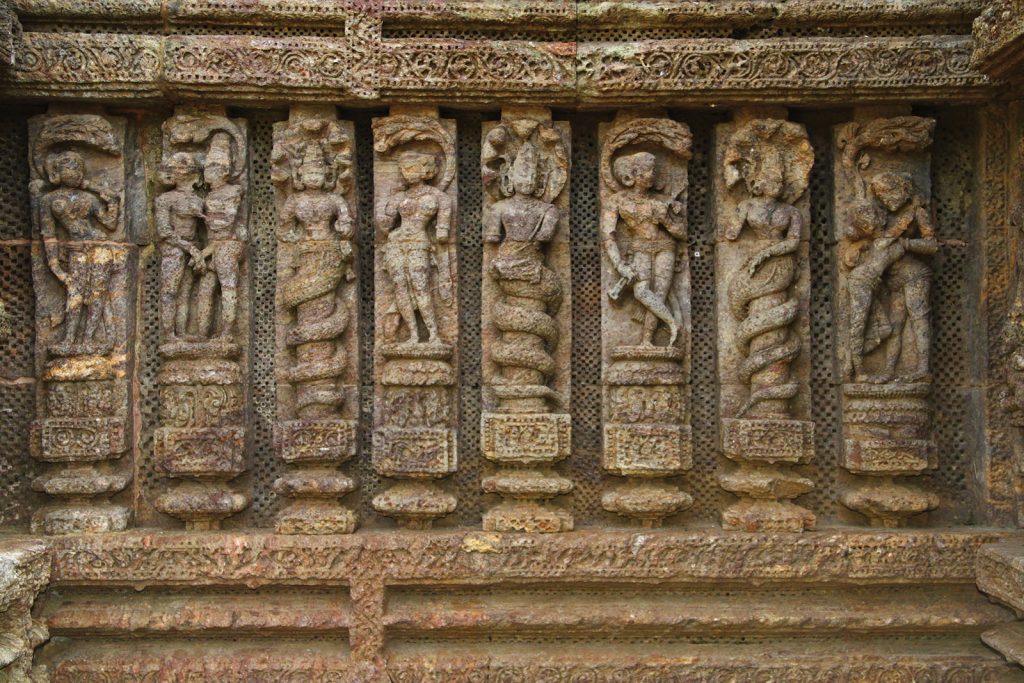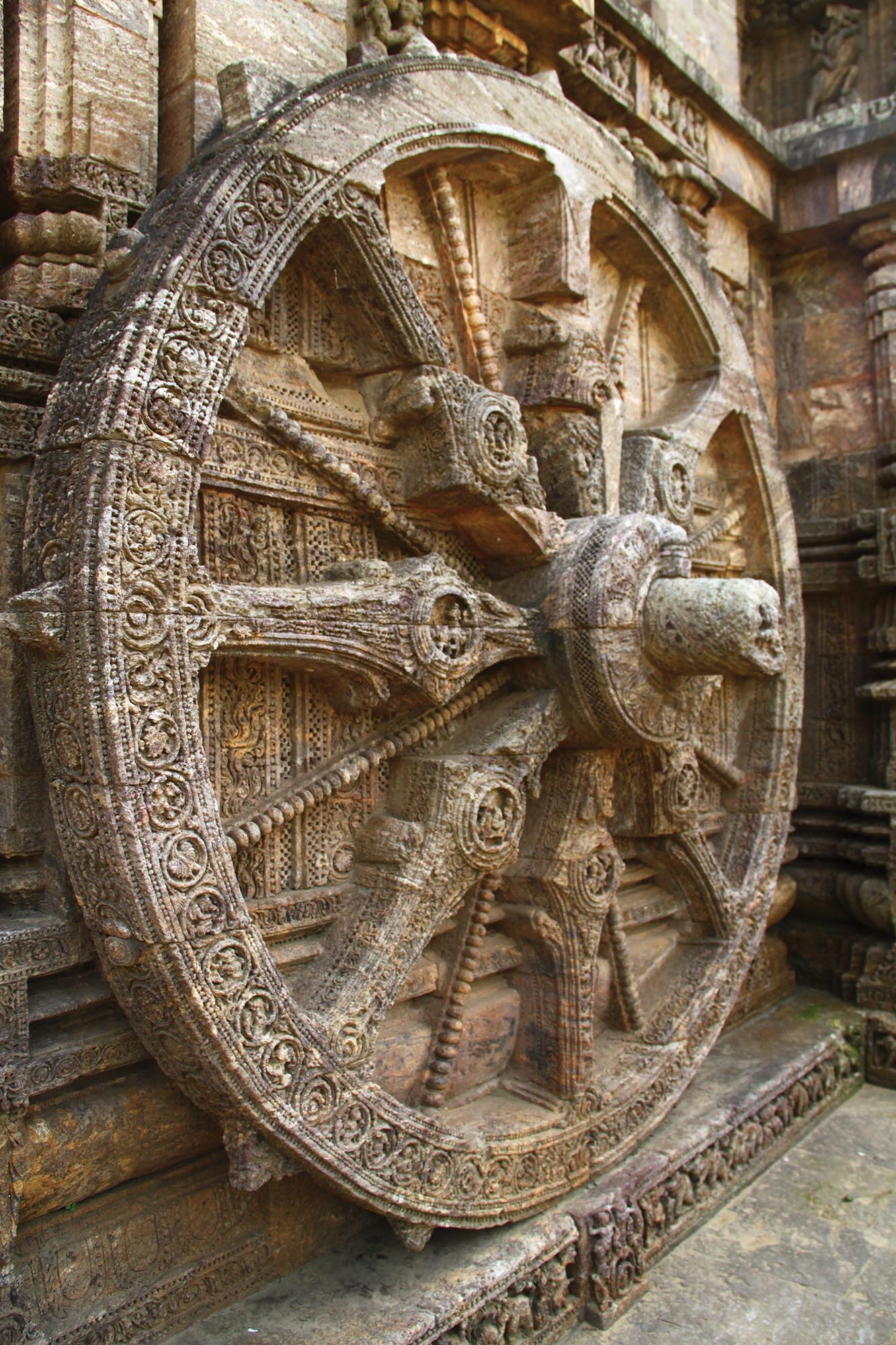Konark Poem to the Sun
By Gigi Dutt
Pics: Alaktanu Halder
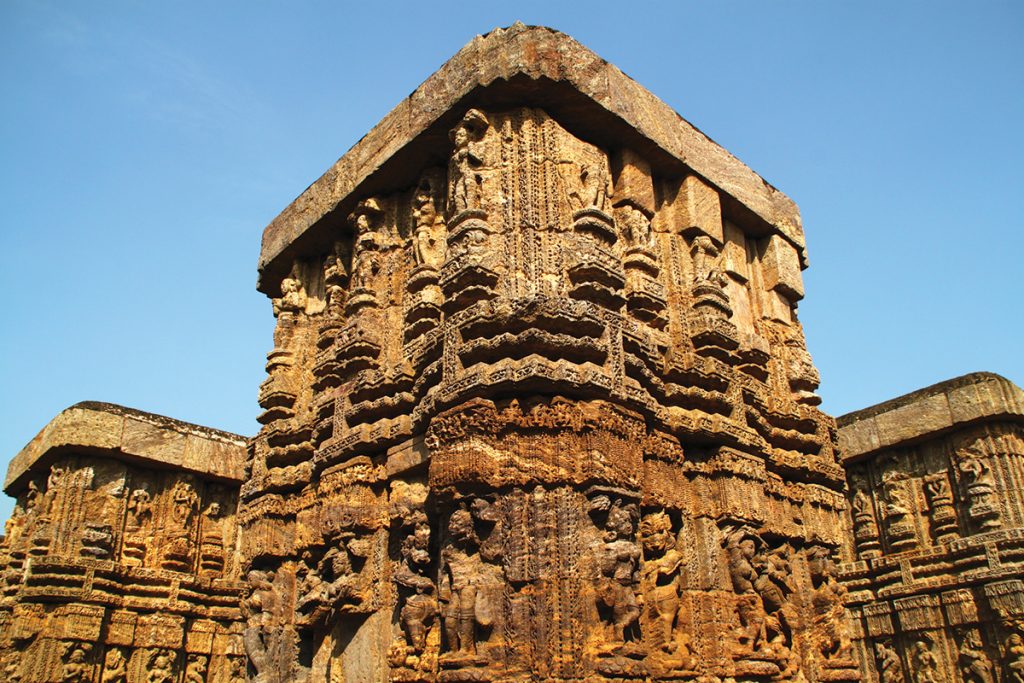
The magnificent, black granite temple at Konark was built in the Kalinga style of temple architecture in the 13th century, by King Narasimha Deva of the Eastern Ganga dynasty and has been a UNESCO World Heritage site since 1984. Some believe there was once a much older temple, from the 9th century, on this site, and some claim that it was built by Samba ‒ Lord Krishnaʼs son ‒ who was cursed with leprosy by his father. Legend has it that Sambaʼs leprosy was cured, after 12 years of penance, by Surya the Sun God, in whose honour he built the Black Pagoda, as this temple is also known. It is supposed to have taken 1200 workers around 12 years to build the temple.
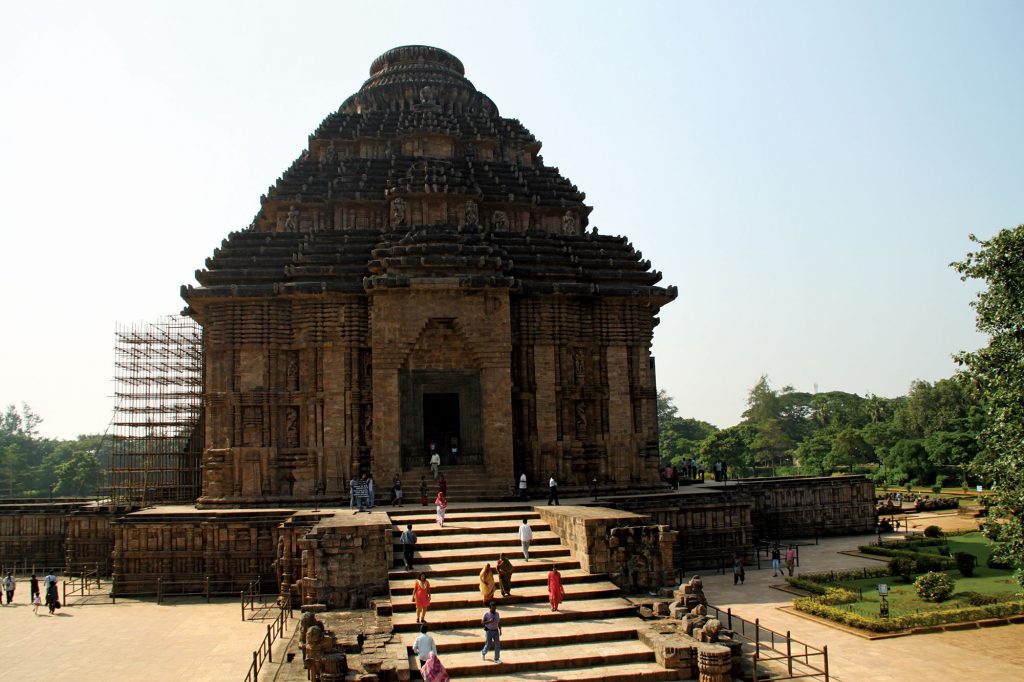
“The grand architecture and majestic proportions of the temple are complemented by detailed sculpture, both individual pieces and tableaux”
“As we leave Konark, Tagore’s eulogy about the temple rings in my ears : Here the language of stone surpasses the language of man “
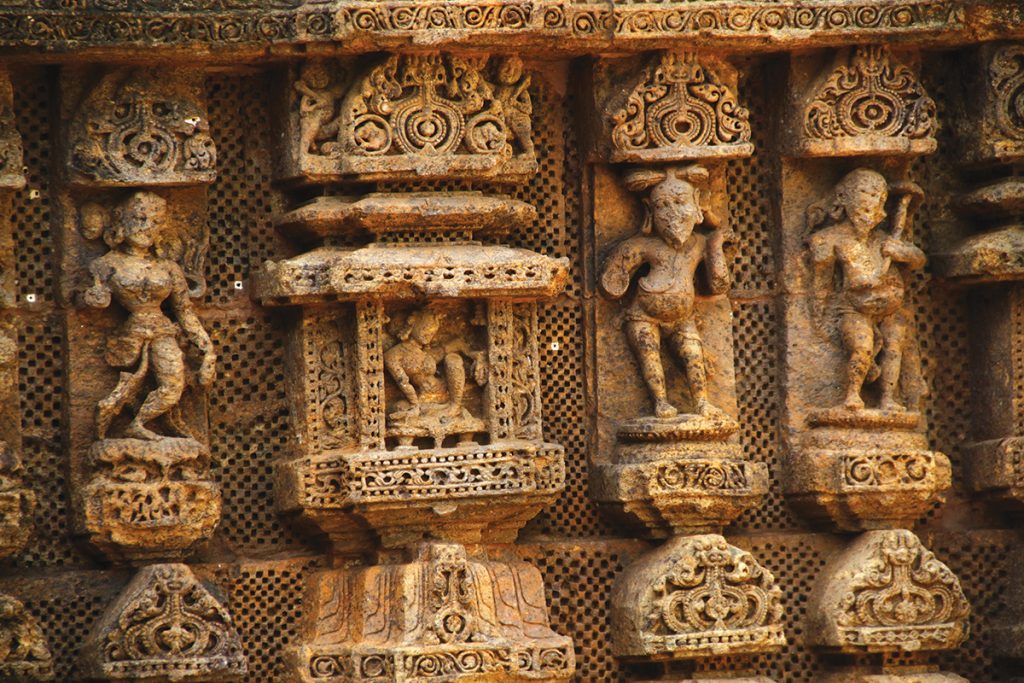
No matter how many times one visits Konark, the first sight of the ruins always renders one breathless. ʻKonaʼ means ʻbreathlessʼ and ʻarkaʼ means ʻsunʼ – literally, ʻsun from an angleʼ – and it is easy to lose oneself in the templeʼs glorious past when it was located right on the sea shore and daily witnessed the sun swimming out of the sea and into the firmament. The first rays of the sun were believed to have been reflected from the fabled diamond on the deity of the Main Sanctum for a few minutes each dawn. Today, regrettably, the shoreline has receded from the Sun Temple by a couple of kilometers.
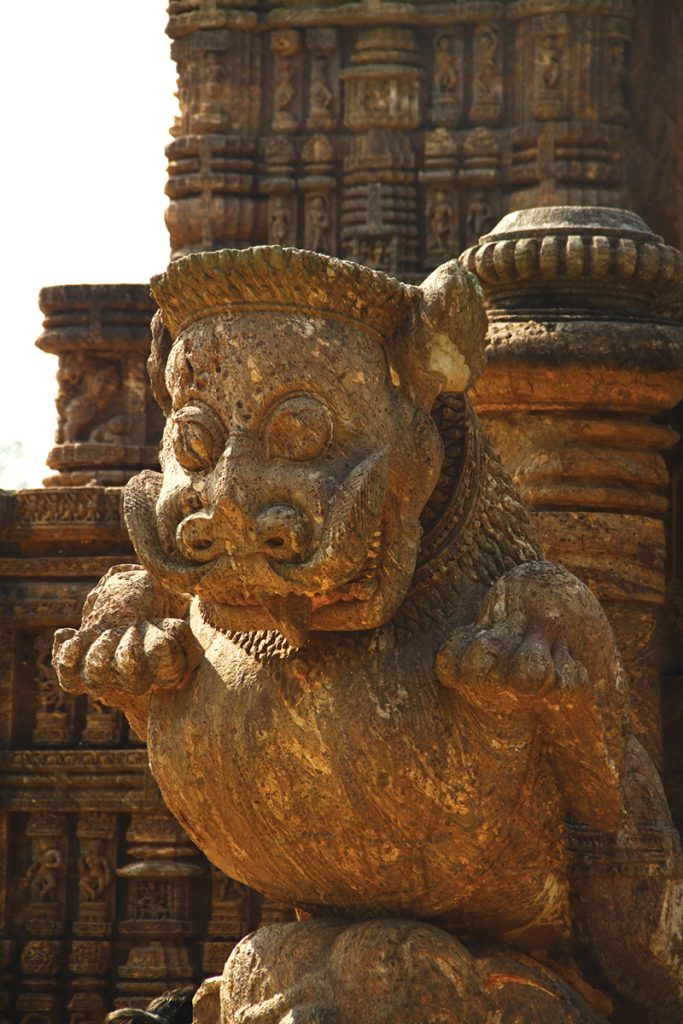
As we enter Konark on our latest visit, moving past the hordes of souvenir sellers, tour guide touts and the two lions at the entrance, each crushing an elephant lying on top of a human, we marvel at the exquisite stone carving that embellishes the entire complex.
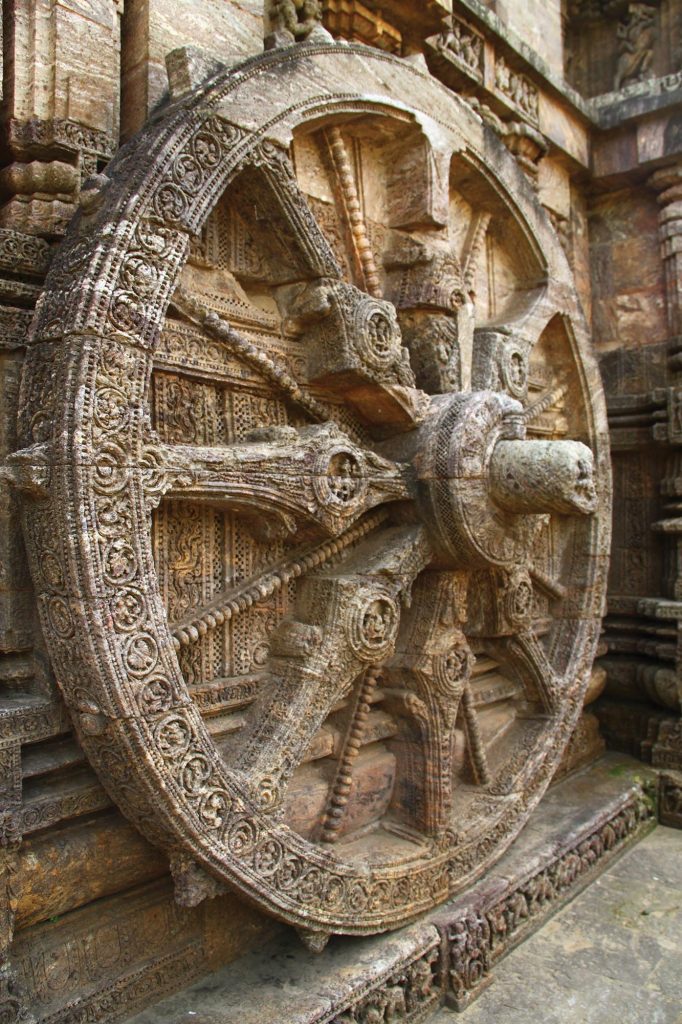
The temple is in the form of the Sun Godʼs chariot drawn by seven horses, which pull the temple eastwards and symbolise the seven days of the week. Twelve pairs of intricately carved wheels, representing the 12 months, form the base of the chariot and the spokes in each wheel serve as sundials, the time of day being told by the shadows they cast.
“The first rays of the sun were believed to have been reflected from the fabled diamond on the deity of the Main Sanctum”
The grand architecture and majestic proportions of the temple are complemented by detailed sculpture, both individual pieces and tableaux, which provide a fascinating insight into the life of those times. Court scenes, battle scenes and love scenes vie for attention with deities, nature, musicians, dancers, animals and slices of life. And then, of course, there is Konarkʼs mind-boggling array of erotic sculpture.
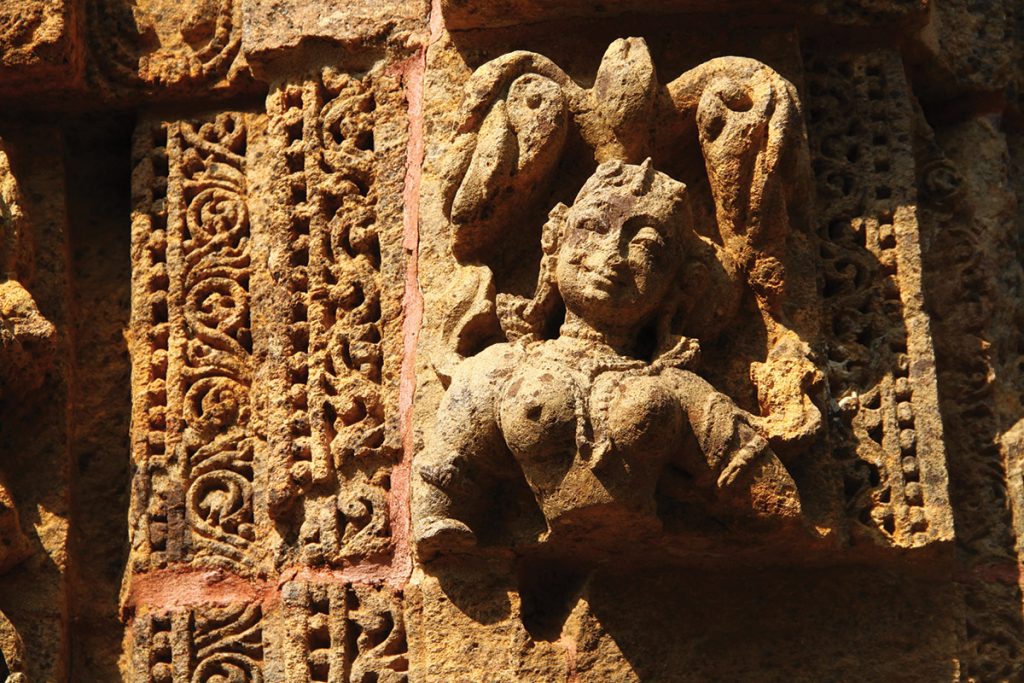
As we move around the erotica in bemusement, our minds are a jumble of many questions and possible answers. What place did these sensuous and explicit scenes have in a place of worship? Were these meant to be embraced as a part of lifeʼs carnival, in its totality? Was the king indulging in some sort of personal kink? Was this a visual and educative representation of the Kama Sutra? Or was this a welcome source of release and entertainment for the common people of the land? Whatever the answers, it is certain that, unfortunately, Konarkʼs erotica often tends to overshadow its many splendours.
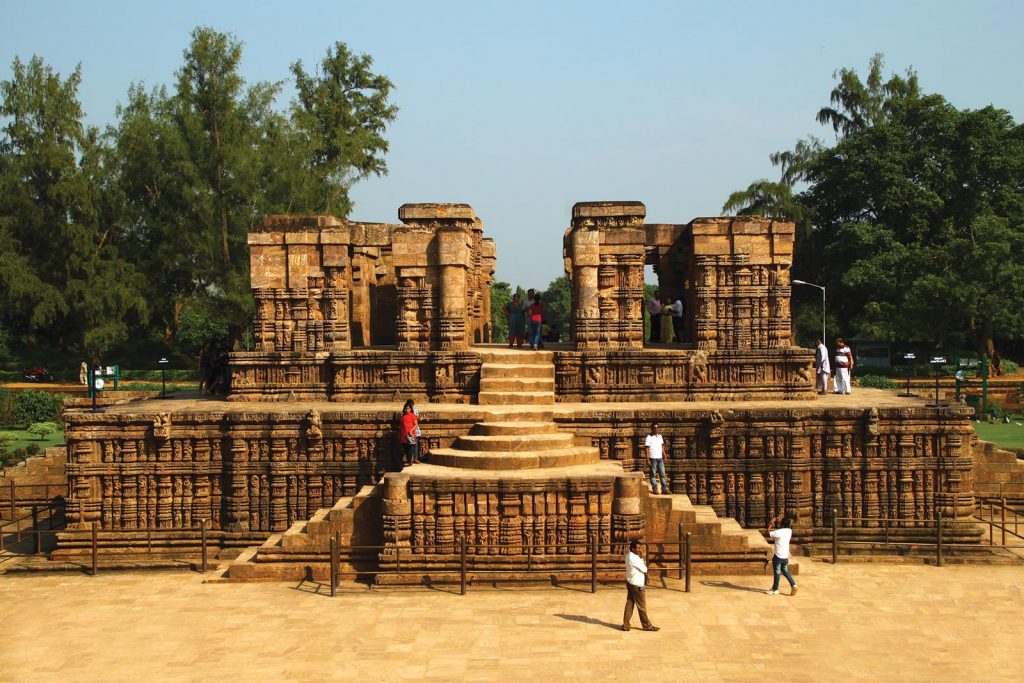
In the midst of the imposing ruins, the Audience Hall, Dining Hall (Bhoga Mandap), Porch (Jagmohana, with its pyramidal roof) and parts of the Dancing Hall (Nata Mandir) seem to have escaped the ravages of time. The Main Sanctum, which housed the deity, is destroyed. The plinth, decorated by friezes, runs all the way round the base of the temple and the platform is in five layers, much like the temple itself. The chief architect BishuMaharanʼs 12 year old son, Dharmapada, is believed to have completed the near impossible task of installing the peak (Dadhunauti) which was said to be a giant magnet weighing many tons and the main destroyed and ransacked Konark while on a mission of conquest in Orissa. Others go with the theory that because of relentless attacks on Hindu temples by Orissaʼs Muslim conquerors, the priests of Konark first buried the presiding deity under the sand, before taking it to the Jagannath Temple in Puri where it resides in the temple of Indra. Another view holds that Portuguese sailors stole the main magnet from the peak as it was powerful enough to affect their shipsʼ compasses and the ships ran aground, thus causing the central structure to collapse. In the 17th century the Raja of Khurda too had removed a number of Konarkʼs treasures. Many believe the deity of Konark is yet to be recovered but the most pleasing explanation ‒ one that is in consonance with the importance of Konark ‒ is that the image of the Sun treasured in the National Museum in Delhi is Konarkʼs lost idol. As we leave Konark, Tagoreʼs eulogy about the temple rings in my ears: ʻHere the language of stone surpasses the language of manʼ and I know that I will be back yet again, for the lure of the Black Pagoda is timeless.
